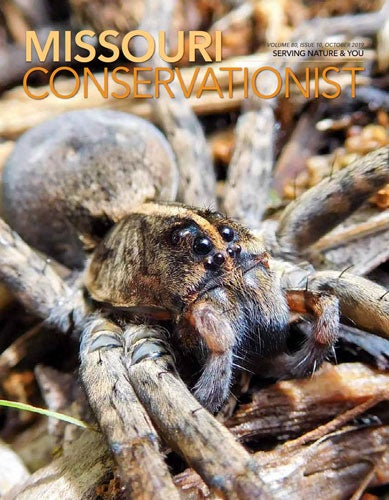In the tree-dappled moonlight not far from your home, a predator is hunting. It moves quietly among the leaves and plants of the undergrowth. Spotting prey nearby, it waits — then leaps, grasping the insect in its jaws. A little wolf spider enjoys her meal.
Wolf spiders are among the most familiar type of spider in Missouri. They are distinctive, abundant, and important wildlife elements in Missouri’s ecosystems.
Distinctive
The comparison of some types of spiders to little wolves dates back to descriptions of certain spiders made by the Greek philosopher, Aristotle, more than 2,000 years ago. Rather than spinning
webs to catch their prey, wolf spiders are active hunters that stalk and pounce. Although these spiders do not move in a coordinated pack as wolves do, their grayish color, furry appearance, hunting behavior, and nocturnal habits also seem wolflike. Wolf spiders make up the Lycosidae family, which gets its name from lycos, the Greek word for wolf.
Spiders have two main body parts —the head, which is known as the cephalothorax, and the abdomen. They have eight legs, which are attached at the base of the cephalothorax. Wolf spiders can be distinguished from other types of spiders by their unique eye arrangement. All wolf spiders have eight eyes. Four large eyes form the corners of a box-shape as seen from above. Below there is a row of four more smaller eyes.
Wolf spider mouth parts, called chelicera, include two stout, basal segments that make up a prominent feature of the spider’s face below the eye rows. Tiny fangs are rarely seen since they are nested in grooves until the spider needs them to capture its prey. As with other spiders, small, jointed, leglike appendages known as pedipalps extend in front of the chelicera. The spider’s mouth is located behind the chelicera at the base of the pedipalps.
Diverse
More than 40 species of wolf spider have been documented in Missouri. At first glance, they all appear to be brown, tan, and gray. This cryptic coloration helps them hide from predators and avoid detection by all but the most observant people. The hairs seen on spiders are known as setae. Upon closer examination, wolf spiders can also have a wide variety of stripes, bands, and spots of orange, black, and white on their head, abdomen, and legs. Different wolf spider species also vary in size. Pirate wolf spiders are tiny, less than 1/8 inch measured from the front of the head to the back tip of the abdomen (not including legs). Large wolf spiders, such as tiger wolf spiders, may be more than ¾ inch long, while their legs cause them to appear even larger. Size and color patterns are helpful for identification and to distinguish between different species.
Some of the larger and more familiar wolf spiders have common names, while most wolf spider species are known only by their scientific names. One reason for this is that distinguishing between wolf spider species can be technical and difficult. Most can be confidently identified only through examining their reproductive structures with a microscope. This aspect of spider study can be a real challenge.
Fascinating
Even though wolf spiders do not use webs to catch their food as other kinds of spiders do, they can produce silk from a set of six spinnerets positioned at the end of their abdomen. Females of some wolf spiders are known to spin silk “draglines” containing pheromones, special chemical messages for mating purposes that the male can follow. Wolf spiders use other interesting tactics including “singing” and “dancing” to attract a mate. The males of some wolf spiders, including species of brushlegged wolf spiders, stridulate — creating sound vibrations that attract females. Unlike crickets and cicadas, these sounds are barely loud enough for humans to hear without special amplification equipment. The males of other wolf spider species, such as the shore spider, can be observed waving their front legs and palps to attract a female.
After mating occurs, female wolf spiders lay eggs, wrapping them in silk, and creating a round egg sac. In a behavior distinctive to wolf spiders, the females then protect their egg sac, carrying it attached to the spinnerets. This enables them to guard their eggs even while continuing to move and hunt. If the egg sac becomes separated, the female will work to reattach it.
When the eggs hatch, often with the assistance of the mother opening it with her mouth parts, the tiny wolf spiderlings climb onto the upper part of the mother’s abdomen. Female wolf spiders have specially shaped hairs there that help the young spiderlings hold on. Spiderlings may climb off and then back onto their mother. While the mother spider does not feed or provide direct care to the young, giving them a ride provides protection from predators, including other spiders. The young disperse after several days.
Wolf spiders are known to live from one to several years. Like other arthropods (insects, for example), wolf spiders molt their exoskeleton in stages, known as instars, as they grow. Spiderlings grow from immature and subadult stages, finally molting into an adult with fully functioning reproductive organs at their final instar. October is a great month to find and observe wolf spiders since they are very active, and most species are at their subadult and adult life stages.
Many wolf spiders, including Varacosa avara, are active throughout the winter, particularly during warm spells when the temperature rises above 45 F. When the temperature dips below freezing, they become dormant. Naturally occurring liquid glycols accumulated in the blood act as antifreeze, preventing them from freezing to death. When wolf spiders are not active, they shelter inside a retreat constructed from plant debris held together with silk. Some wolf spiders, including the tiger wolf spiders, are known to dig burrows.
Beneficial
Wolf spiders are important predators. Contrary to the myth that spiders simply suck the juice from their prey, wolf spiders usually consume the entire insect after softening it with digestive saliva. Wolf spiders, in turn, serve as food for birds, small mammals, snakes, lizards, frogs, toads, wasps, and other spiders. It is estimated that spiders eat 10 percent of their body weight of insects and other small arthropods each day, amounting to thousands of insects eaten by each spider per year. Wolf spiders are a particularly abundant family of spiders in Missouri. Their population numbers in the tens of thousands per acre of meadow and in the leaf litter of forested habitats. When this is multiplied by the quantity of insects consumed, the role they play in controlling insect populations is substantial.
In addition to food crops that humans depend on, wolf spiders protect the overall health of grasslands, trees, and forests through controlling insects. Many biologists include spiders as indicators of the ecological health of natural ecosystems.
Like so many other wildlife species, wolf spider diversity and populations are impacted by habitat loss. For this reason, wolf spiders benefit from thoughtful natural resource stewardship practices. For example, planting trees for birds and native perennials for pollinating insects undoubtedly benefits spiders as well.
Fun to Find and Study
In the tree-dappled moonlight, a family wearing bright headlamps walks slowly. “There’s one!” a child shouts. The family approaches together, crouching down for a better look at the little wolfie revealed in the light of their headlamps.
Eye-shining for wolf spiders is becoming an increasingly popular evening activity among nature enthusiasts. This activity is still often referred to as “spider sniffing,” a term that originated as a prank. A guide would convince inexperienced and astounded followers that the spiders were being located by odor (and the guide’s supernatural sense of smell). The trick works because of a well-developed reflective layer inside the wolf spider’s eyes known as the tapetum, which aids in night vision. When you use a bright light close to your own eyes, such as with a headlamp, the distinctive, bright, pale-green eyeshine is reflected from the wolf spider’s eyes. Often, the wolfie will remain still long enough to be approached, observed, photographed, and possibly collected.
To find wolf spiders during the day, look under stones and woody debris. Another method is to toss leaf litter onto a light-colored sheet where the spiders can be easily located while the leaves are picked through and removed. Pitfall traps are also used by arachnologists to collect these ground-dwelling spiders. Whether found in the day or at night, wolf spiders can be gently collected for observation by coaxing them into the opening of a jar or other small, clear container. Since wolf spiders do not have gripping foot tufts found in other types of spiders, they are not able to climb smooth surfaces and can easily be contained within a jar or bowl.
It’s Easy to be a Citizen-Scientist
Many details about wolf spider diversity, populations, range distributions, habitat preferences, seasonality, life history, and ecological impact are still largely unknown. This is actually exciting news for nature enthusiasts with an interest in these “little wolves.” Advances in computers and digital technology over the past few decades have expanded our ability to study and document elements of the natural world, including wolf spiders. Even affordable hand-held digital cameras have macro-photography functions and can take high-resolution pictures. The capabilities of cellphone cameras are improving every year. This has resulted in a boom of people participating in citizen-science efforts to document nature.
Citizen-science websites, such as iNaturalist.org and Bugguide.net, enable people to participate in meaningful science efforts. Each submitted image serves to document an individual organism seen in a certain location at a specific date and time. Frequently, other contributors help with identification and share additional information for photo submissions. These sites provide opportunities, not only to review photo documentation of the richness of life around us, including wolf spiders, but also to contribute valuable information that can be accessed by scientists from around the world.
Powder Valley, Burr Oak Woods, Springfield, and Cape Girardeau nature centers have dedicated projects documenting the biodiversity of these areas on iNaturalist.org.
In the tree-dappled moonlight not far from your home, a family like yours collects a little wolf spider — photographically. Within a few minutes, they take several good images with a camera and a smartphone.
“This is a really neat one,” says one of the kids.
“OK, it’s time to let it go,” says a parent. “I think I see another one!” calls out another young citizen-scientist.
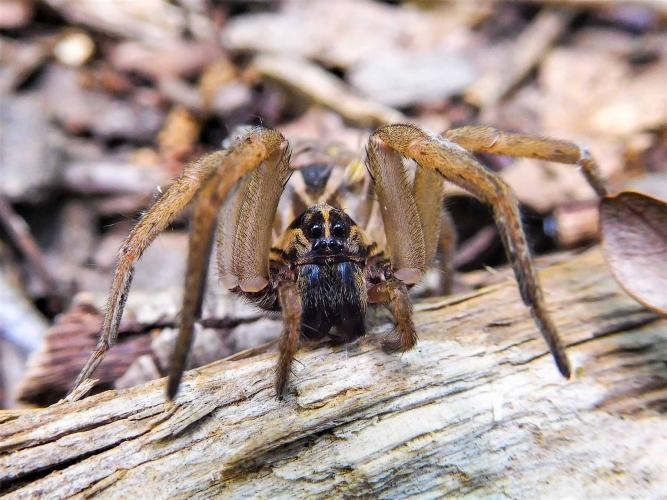
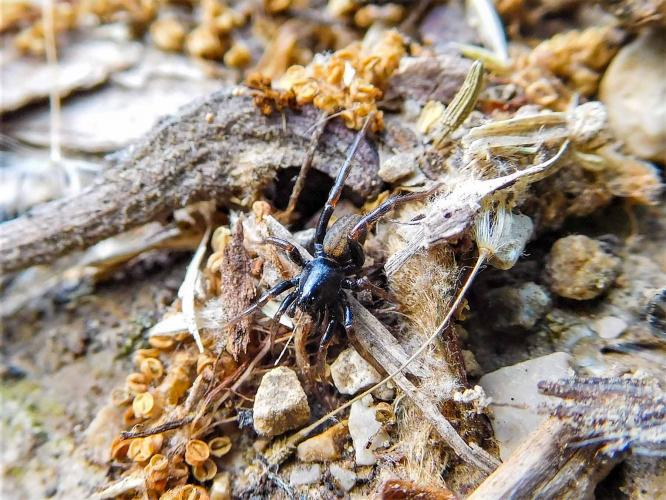
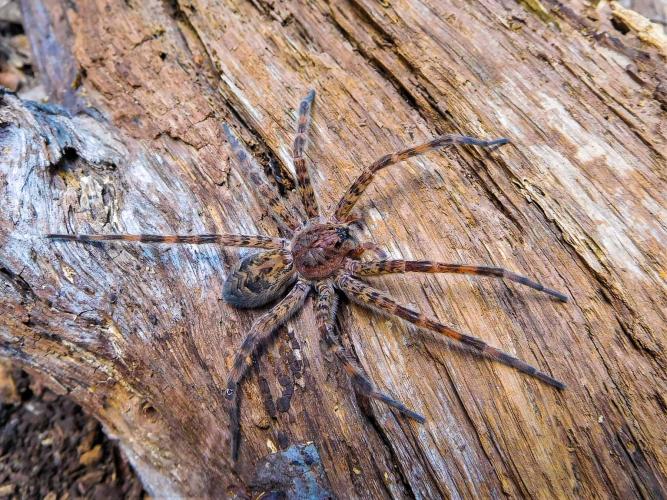
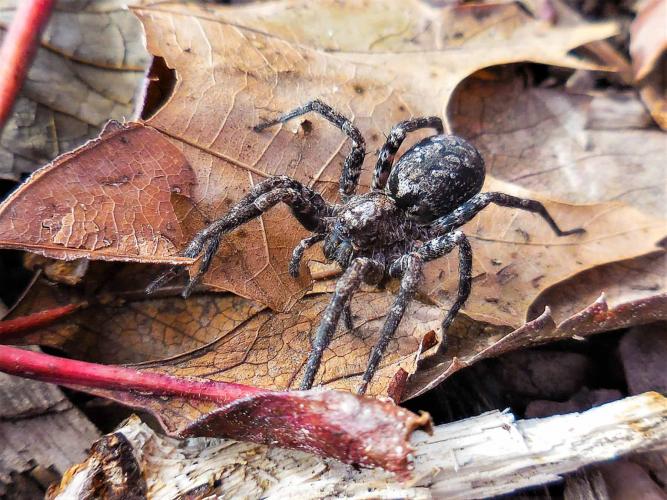
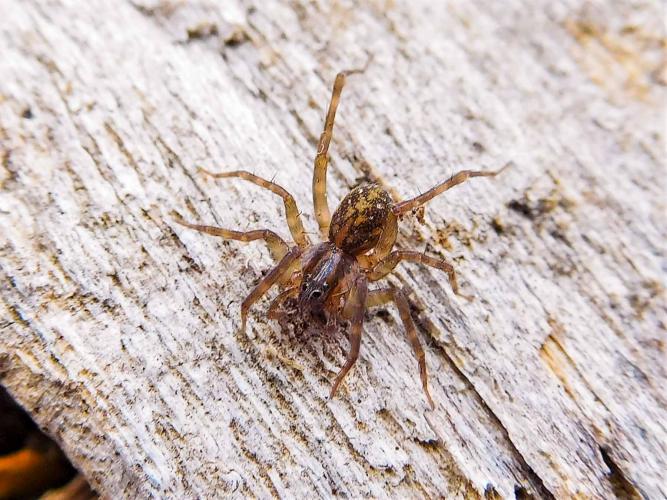

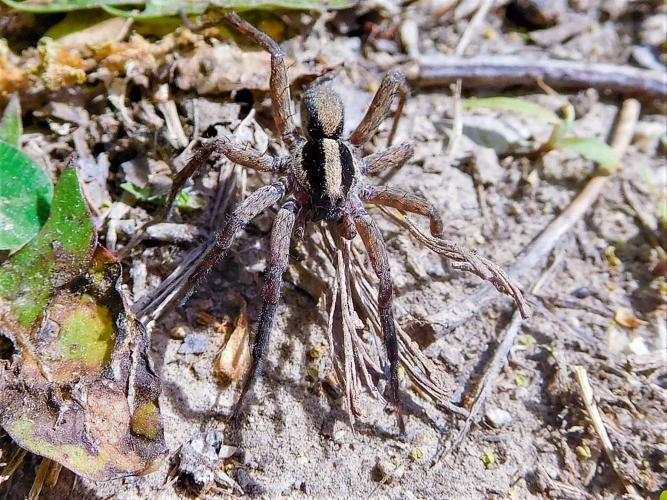

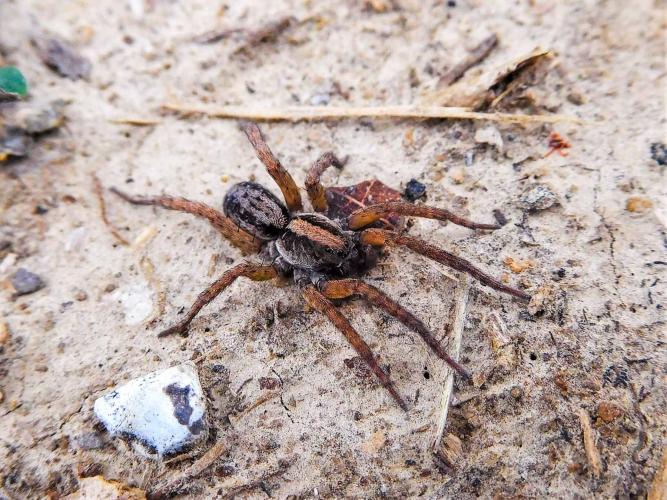


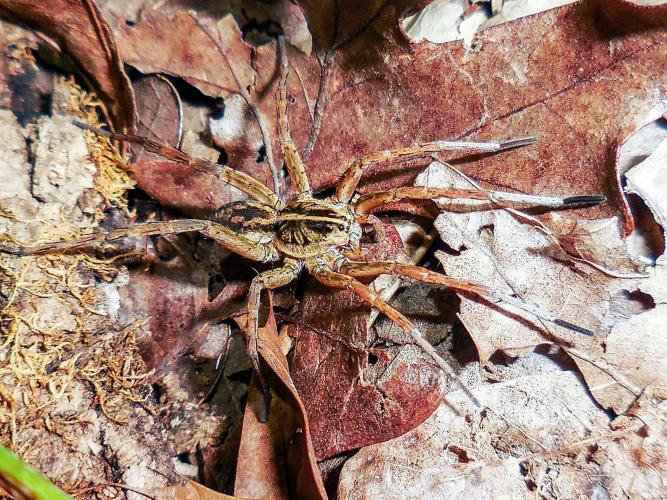
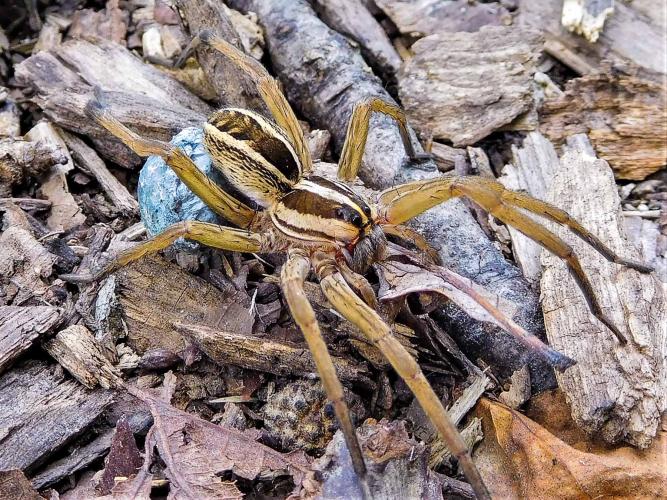
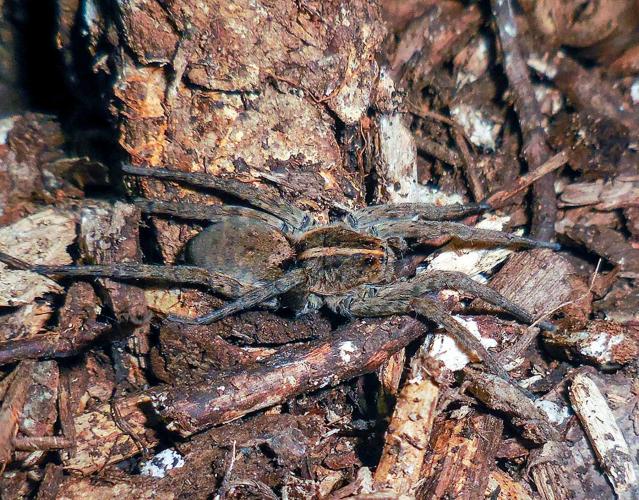
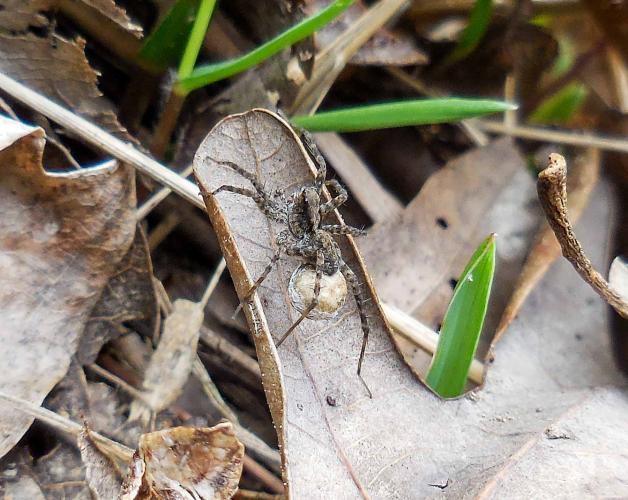


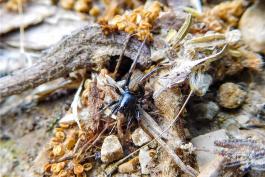
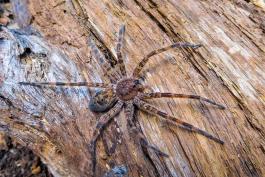
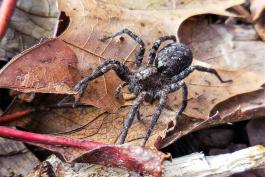
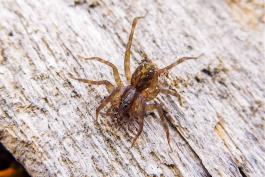

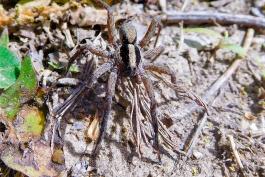

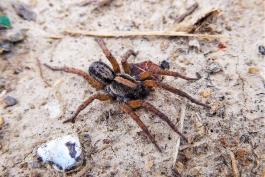
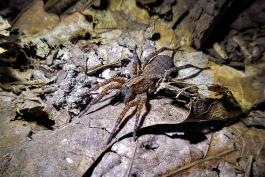

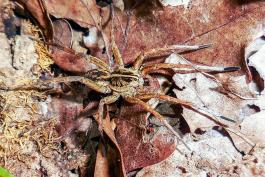

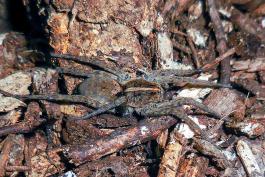

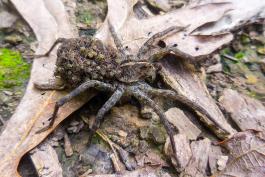
Also In This Issue
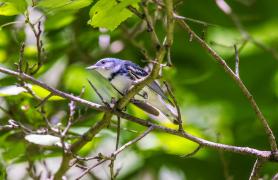

And More...
This Issue's Staff
Editor - Angie Daly Morfeld
Associate Editor - Larry Archer
Staff Writer - Bonnie Chasteen
Staff Writer - Heather Feeler
Staff Writer - Kristie Hilgedick
Staff Writer - Joe Jerek
Art Director - Cliff White
Designer - Les Fortenberry
Designer - Marci Porter
Photographer - Noppadol Paothong
Photographer - David Stonner
Circulation - Laura Scheuler






















